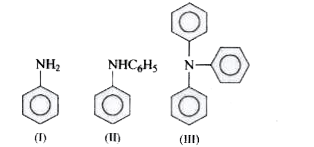Arrange the following ions in order of their increasing size: Li+,Mg2+,K+,AI3+.
To arrange the ions Li+,Mg2+,K+,Al3+ in order of their increasing size, we will follow these steps:
Step 1: Identify the number of electrons in each ion
- Li^(+): Lithium has 3 electrons, and losing 1 electron gives it 2 electrons.
- Mg^(2+): Magnesium has 12 electrons, and losing 2 electrons gives it 10 electrons.
- K^(+): Potassium has 19 electrons, and losing 1 electron gives it 18 electrons.
- Al^(3+): Aluminum has 13 electrons, and losing 3 electrons gives it 10 electrons.
Step 2: Determine the effective nuclear charge for each ion
- Li^(+): 3 protons attracting 2 electrons.
- Mg^(2+): 12 protons attracting 10 electrons.
- K^(+): 19 protons attracting 18 electrons.
- Al^(3+): 13 protons attracting 10 electrons.
Step 3: Compare the effective nuclear charge
- Li^(+) has the least effective nuclear charge (3 protons for 2 electrons).
- Al^(3+) has a higher effective nuclear charge (13 protons for 10 electrons).
- Mg^(2+) has a similar effective nuclear charge to Al^(3+) but with 12 protons for 10 electrons.
- K^(+) has the highest effective nuclear charge (19 protons for 18 electrons).
Step 4: Arrange the ions based on size
- The size of cations decreases with increasing positive charge and increasing effective nuclear charge. Therefore, the order from smallest to largest size is:
1. Al^(3+) (smallest due to highest charge)
2. Mg^(2+)
3. Li^(+)
4. K^(+) (largest due to lowest charge)
Final Order
The final order of increasing size is:
Al^(3+) < Mg^(2+) < Li^(+) < K^(+)
- Li^(+): Lithium has 3 electrons, and losing 1 electron gives it 2 electrons.
- Mg^(2+): Magnesium has 12 electrons, and losing 2 electrons gives it 10 electrons.
- K^(+): Potassium has 19 electrons, and losing 1 electron gives it 18 electrons.
- Al^(3+): Aluminum has 13 electrons, and losing 3 electrons gives it 10 electrons.
- Li^(+): 3 protons attracting 2 electrons.
- Mg^(2+): 12 protons attracting 10 electrons.
- K^(+): 19 protons attracting 18 electrons.
- Al^(3+): 13 protons attracting 10 electrons.
- Li^(+) has the least effective nuclear charge (3 protons for 2 electrons).
- Al^(3+) has a higher effective nuclear charge (13 protons for 10 electrons).
- Mg^(2+) has a similar effective nuclear charge to Al^(3+) but with 12 protons for 10 electrons.
- K^(+) has the highest effective nuclear charge (19 protons for 18 electrons).
- The size of cations decreases with increasing positive charge and increasing effective nuclear charge. Therefore, the order from smallest to largest size is:
1. Al^(3+) (smallest due to highest charge)
2. Mg^(2+)
3. Li^(+)
4. K^(+) (largest due to lowest charge)
The final order of increasing size is:
Al^(3+) < Mg^(2+) < Li^(+) < K^(+)
Topper's Solved these Questions
- CHEMICAL BONDING-I & IIBook:VMC MODULES ENGLISHChapter:CHEMICAL BONDING-I & IIExercise:JEE Main (Archive)
Explore 62 Videos
- CHEMICAL BONDING & MOLECULAR STRUCTURE Book:VMC MODULES ENGLISHChapter:CHEMICAL BONDING & MOLECULAR STRUCTURE Exercise:IN-CHAPTER EXERCISE-L
Explore 9 Videos
- CHEMICAL EQUILIBRIUMBook:VMC MODULES ENGLISHChapter:CHEMICAL EQUILIBRIUMExercise:IN-CHAPTER EXERCISE - G
Explore 10 Videos
Similar Questions
Knowledge Check
Arrange the following in increasing order of basicity.
 AI<II<IIIBIII<I<IICIII<II<IDII<III<I
AI<II<IIIBIII<I<IICIII<II<IDII<III<IArrange the following in increasing order of basicity :
 AS<Q<R<PBS<Q<P<RCS<R<P<QDP<Q<R<S
AS<Q<R<PBS<Q<P<RCS<R<P<QDP<Q<R<SArrange the following in increasing order of stability.
 AI<II<IIIBII<I<IIICI<III<IIDII<III<I
AI<II<IIIBII<I<IIICI<III<IIDII<III<I
Arrange the following in the order of increasing entropy:
View SolutionArrange the following in descending order of their size.
View SolutionArrange the following ions in order of their decreasing ionic radii.
Li⊕,K⊕,Mg2+,Al3+
View SolutionArrange the following ions in order of increasing ionic radii.
Li+,Na+,Al3+,K+,Mg2+
View SolutionArrange the following in the increasing order of their acidity.

View Solution
